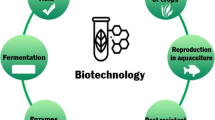Abstract
The behavior of microorganisms in foods is governed by the constraints applied to the microflora by a variety of environmental and ecological factors. These include water activity, pH, Eh, chemical composition, the presence of natural or added antimicrobial compounds, and storage temperature, as well as processing factors such as the application of heat and physical manipulation. Control of these factors will govern whether the food spoils or not, whether any microbial health hazard arises, and whether desired microbial processes are successful or not. While much is known about the effects of individual environmental factors, the effects due to their interactions are less understood. The two main problems now facing the food microbiologist are optimization of environmental parameters and the selection of strains with specific properties. A better understanding of the mechanisms of action and interactions between the various environmental factors, coupled with the application of modern techniques to produce strains with particular properties, will lead to optimum use of food supplies and improvements in quality. There is also potential for the development of new and novel foods.
Similar content being viewed by others
References
Baldham CD (1856) Prose halieutics, John W Parker & Son, London
Cutting CL (1955) Fish saving. A history of fish processing from ancient to modern times. Leonard Hill (Books) Ltd, London
Deraniyagala PEP (1933) Cured marine products of Ceylon. Celon J Sci (C) 5:49
Easter MC, Gibson DM, Ward FB (1982) A conductance method for the assay and study of bacterial trimethylamine oxide reduction. J Appl Bacteriol 52:357–365
Erichsen I (1983) Fermented fish and meat products: the present position and future possibilities. In: Roberts TA, Skinner FA (eds) Food microbiology SAB Symposium Series No 11, Academic Press, London, pp 271–286
Gould GW, Brown MH, Fletcher BC (1983) Mechanisms of action of food preservation procedures. In: Roberts TA, Skinner FA (eds) Food microbiology SAB Symposium Series No 11, Academic Press, London, pp 67–84
International Commission on Microbiological Specifications for Foods (1980) Microbial ecology of foods. Vol. I. Factors affecting life and death of microorganisms. Academic Press, New York
International Commission on Microbiological Specifications for Foods (1980) Microbial ecology of foods. Vol II. Food commodities. Academic Press, New York
Pedersen CS (1979) Microbiology of food fermentations. AVI Publishing Co, Westport, Connecticut
Radcliffe W (1921) Fishing from earliest times. John Murray Ltd, London.
Ratkowsky DA, Olley J, McMeekin TA, Ball A (1982) Relationship between temperature and growth rate of bacterial cultures. J Bacteriol 149(1):1–5
Roberts TA, Skinner FA (eds) (1983) Food microbiology, advances and prospects. SAB Symposium Series No 11, Academic Press, London
Wee-Ching W Yen (1908) The importance of fishing and its allied industry, the manufacture of salt. Address before the International Fishing Congress, Washington DC, USA
Wilkinson Sir JG (1878) The manners and customs of ancient Egyptians. Revised by Birch S. John Murray, Ltd, London
Author information
Authors and Affiliations
Rights and permissions
About this article
Cite this article
Hobbs, G. Ecology of food microorganisms. Microb Ecol 12, 15–30 (1986). https://doi.org/10.1007/BF02153219
Issue Date:
DOI: https://doi.org/10.1007/BF02153219




